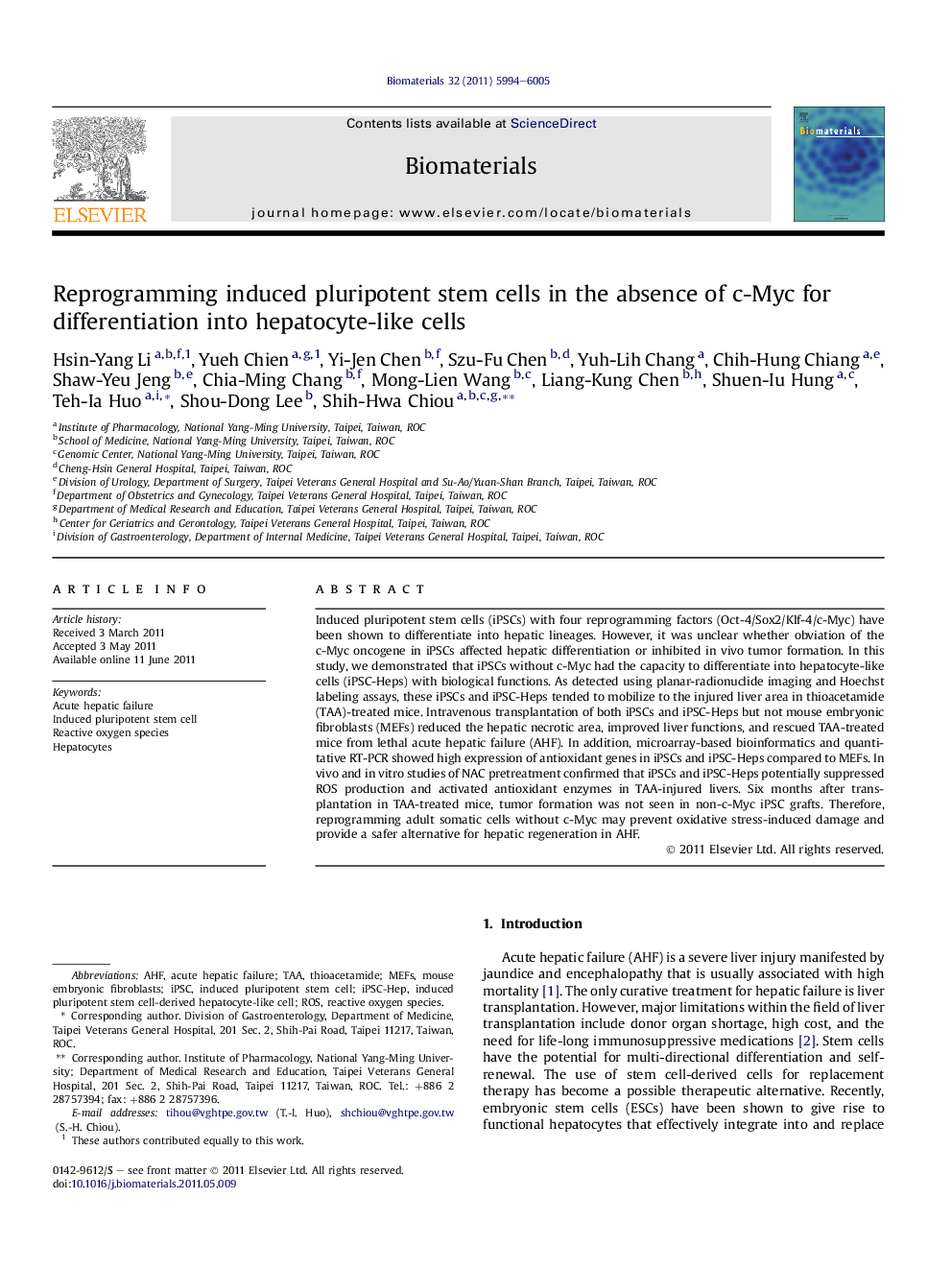| Article ID | Journal | Published Year | Pages | File Type |
|---|---|---|---|---|
| 7373 | Biomaterials | 2011 | 12 Pages |
Induced pluripotent stem cells (iPSCs) with four reprogramming factors (Oct-4/Sox2/Klf-4/c-Myc) have been shown to differentiate into hepatic lineages. However, it was unclear whether obviation of the c-Myc oncogene in iPSCs affected hepatic differentiation or inhibited in vivo tumor formation. In this study, we demonstrated that iPSCs without c-Myc had the capacity to differentiate into hepatocyte-like cells (iPSC-Heps) with biological functions. As detected using planar-radionuclide imaging and Hoechst labeling assays, these iPSCs and iPSC-Heps tended to mobilize to the injured liver area in thioacetamide (TAA)-treated mice. Intravenous transplantation of both iPSCs and iPSC-Heps but not mouse embryonic fibroblasts (MEFs) reduced the hepatic necrotic area, improved liver functions, and rescued TAA-treated mice from lethal acute hepatic failure (AHF). In addition, microarray-based bioinformatics and quantitative RT-PCR showed high expression of antioxidant genes in iPSCs and iPSC-Heps compared to MEFs. In vivo and in vitro studies of NAC pretreatment confirmed that iPSCs and iPSC-Heps potentially suppressed ROS production and activated antioxidant enzymes in TAA-injured livers. Six months after transplantation in TAA-treated mice, tumor formation was not seen in non-c-Myc iPSC grafts. Therefore, reprogramming adult somatic cells without c-Myc may prevent oxidative stress-induced damage and provide a safer alternative for hepatic regeneration in AHF.
